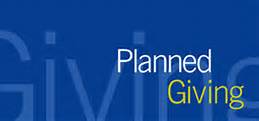 There is a phrase in fundraising circles that says it could more aptly be called “friend-raising” and that could not be more true than in the case of planned giving. At a time when any source of non-profit revenue – grants, contracted services or even entrepreneurship – can be tenuous at best, the concept of planned giving makes even more sense. Most development professionals would concur, the most stable and steadfast source of revenue in a non-profit organization is not the corporations, businesses or foundations – it is individual donors.
There is a phrase in fundraising circles that says it could more aptly be called “friend-raising” and that could not be more true than in the case of planned giving. At a time when any source of non-profit revenue – grants, contracted services or even entrepreneurship – can be tenuous at best, the concept of planned giving makes even more sense. Most development professionals would concur, the most stable and steadfast source of revenue in a non-profit organization is not the corporations, businesses or foundations – it is individual donors.
 In today’s economy it behooves charitable non-profit organizations – whether they are small and local or large and nationwide – to develop some kind of planned giving program. According to David C. Hall of the University of Arkansas in an article published in The Non-Profit Times (May, 2013), if you are not asking your donors for planned gifts, someone else is. The literature in the field abounds with ideas about converting annual fund donors into planned givers. In another article, Andrea Wasserman, president of Social Profit Ventures in Washington D.C., makes the analogy of a “donor funnel”, along which a donor moves from being an annual giver to making planned gifts. According to Wasserman, one of our goals in development is to bring donors into the organization at the point of annual giving and move them along the funnel toward major gifts. Do not allow donors to get stuck at the annual giving level; identify and cultivate donors for larger and planned gifts (The Non-Profit Times, August 20, 2013). Moreover, according to Mr. Hall, organizations that utilize planned giving strategies can earn 50 to 100 percent more than those who do not and a typical planned gift is 200 to 300 times the gift of a donor’s largest annual gift. Additionally, donors who make gifts in their wills typically increase their annual support (The Non-Profit Times, May 29, 2013).
In today’s economy it behooves charitable non-profit organizations – whether they are small and local or large and nationwide – to develop some kind of planned giving program. According to David C. Hall of the University of Arkansas in an article published in The Non-Profit Times (May, 2013), if you are not asking your donors for planned gifts, someone else is. The literature in the field abounds with ideas about converting annual fund donors into planned givers. In another article, Andrea Wasserman, president of Social Profit Ventures in Washington D.C., makes the analogy of a “donor funnel”, along which a donor moves from being an annual giver to making planned gifts. According to Wasserman, one of our goals in development is to bring donors into the organization at the point of annual giving and move them along the funnel toward major gifts. Do not allow donors to get stuck at the annual giving level; identify and cultivate donors for larger and planned gifts (The Non-Profit Times, August 20, 2013). Moreover, according to Mr. Hall, organizations that utilize planned giving strategies can earn 50 to 100 percent more than those who do not and a typical planned gift is 200 to 300 times the gift of a donor’s largest annual gift. Additionally, donors who make gifts in their wills typically increase their annual support (The Non-Profit Times, May 29, 2013).
 Moving beyond the traditional bequeathed gift provided by a donor’s will, there are now many ways in which a potential donor can make a planned gift to an organization that a creative financial advisor can discuss. By definition, planned gifts typically are not part of the donor’s discretionary income and are major gifts made possible by estate and tax planning strategies to maximize their gifts to charitable organizations. For example, potential donors can use appreciated life insurance, a retirement plan, real estate, stock – and even art work to make major gifts. According to Planned Giving.Com, the three types of planned gifts include: 1) gifts that use appreciated assets in lieu of cash, 2) gifts that return income or other financial benefits to the donor such as Charitable Gift Annuities, and 3) gifts payable upon the donors death. According to Mr. Hall, many potential donors are willing if not eager to make a planned gift but they simply do not know how (The Non-Profit Times, May 29, 2013).
Moving beyond the traditional bequeathed gift provided by a donor’s will, there are now many ways in which a potential donor can make a planned gift to an organization that a creative financial advisor can discuss. By definition, planned gifts typically are not part of the donor’s discretionary income and are major gifts made possible by estate and tax planning strategies to maximize their gifts to charitable organizations. For example, potential donors can use appreciated life insurance, a retirement plan, real estate, stock – and even art work to make major gifts. According to Planned Giving.Com, the three types of planned gifts include: 1) gifts that use appreciated assets in lieu of cash, 2) gifts that return income or other financial benefits to the donor such as Charitable Gift Annuities, and 3) gifts payable upon the donors death. According to Mr. Hall, many potential donors are willing if not eager to make a planned gift but they simply do not know how (The Non-Profit Times, May 29, 2013).
As well, planned giving programs require just what its name says – planning.  A bit more involved than organizing a Saturday morning bake sale outside of the WalMart, planned giving requires the strategic cultivation of long-term relationships with donors. One might start by looking at their donor and mail lists and identifying who gives regularly or every time a request is made and who attends all of the events and activities of the organization. In other words, identify who the organization’s most loyal followers are. These are the folks we need to work toward moving along the funnel. Usually, it is not the first-time $50 donation that we seek for planned giving. Also, planned giving programs demand appropriate stewardship, typically in the form of a committee that may include staff as well as the Board of Directors. Moreover, a planned giving program needs to be well represented by a Board of Directors, not only in their stewardship but by their participation in it as well. If a Board of Directors is not invested in the
A bit more involved than organizing a Saturday morning bake sale outside of the WalMart, planned giving requires the strategic cultivation of long-term relationships with donors. One might start by looking at their donor and mail lists and identifying who gives regularly or every time a request is made and who attends all of the events and activities of the organization. In other words, identify who the organization’s most loyal followers are. These are the folks we need to work toward moving along the funnel. Usually, it is not the first-time $50 donation that we seek for planned giving. Also, planned giving programs demand appropriate stewardship, typically in the form of a committee that may include staff as well as the Board of Directors. Moreover, a planned giving program needs to be well represented by a Board of Directors, not only in their stewardship but by their participation in it as well. If a Board of Directors is not invested in the  organization at that level, why should I be? Finally, Mr. Hall also suggests that communication with planned givers needs to be high and in an uncomplicated, objective manner. Keep the message coming, keep it simple and help donors to identify their interests (The Non-Profit Times, July 9, 2013). Major gift donors are an elite club of donors who like to feel that they are “in the loop” with the organization and have access to executives and directors. Development staff can help planned gift donors feel “included” in the organization by sending them timely progress updates, newsletters and handwritten notes when appropriate. When a donor makes a major gift through a planned giving program, many development professionals say that our work is just beginning as we strive to nurture those existing relationships and cultivate new ones. It really is about “friend-raising”.
organization at that level, why should I be? Finally, Mr. Hall also suggests that communication with planned givers needs to be high and in an uncomplicated, objective manner. Keep the message coming, keep it simple and help donors to identify their interests (The Non-Profit Times, July 9, 2013). Major gift donors are an elite club of donors who like to feel that they are “in the loop” with the organization and have access to executives and directors. Development staff can help planned gift donors feel “included” in the organization by sending them timely progress updates, newsletters and handwritten notes when appropriate. When a donor makes a major gift through a planned giving program, many development professionals say that our work is just beginning as we strive to nurture those existing relationships and cultivate new ones. It really is about “friend-raising”.
References
- The Non-Profit Times; Management Tips; “9 Things To Remember When Planning”, May 29, 2013. Retrieved from: http://www.thenonprofittimes.com/management-tips/9-things-to-remember-when-planning/
- The Non-Profit Times; Management Tips; “3 Ps To Starting A Planned Giving Program”, July 9, 2013. Retrieved from: http://www.thenonprofittimes.com/management-tips/3-ps-to-starting-a-planned- giving-program/
- The Non-Profit Times; News and Articles; “Annual Giving Takes Funnel Approach”, August 20, 2013. Retrieved from: http://www.thenonprofittimes.com/news-articles/annual-giving-takes-a-funnel-approach/
- PlannedGiving.Com; Resources: What is Planned Giving? Retrieved from: http://www.plannedgiving.com/
